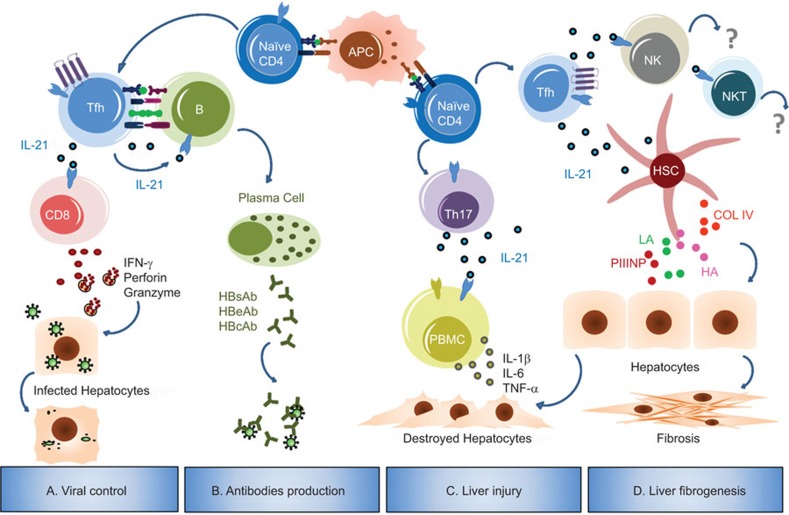Figure 1.
Pleiotropic effects of IL-21 in HBV infection. During the response to HBV, APCs present HBV-derived antigens to naive CD4+ T cells, thereby inducing the differentiation of these T cells into functional T helper cells. (a) Activated CD4+ T cells (Tfh cells in mouse models) secrete IL-21, which sustains antiviral functions of CD8+ T cells by enhancing IFN-γ, perforin and granzyme expression, eventually leading to viral control.21,24,25 (b) In combination with costimulatory signals, IL-21 secreted by Tfh cells regulates B-cell proliferation and differentiation into antibody-secreting plasma cells, thus facilitating the production of HBV-specific antibodies.21,23 (c) Aberrant IL-21 derived from Th17 cells (perhaps Tfh cells) can upregulate the expression of the pro-inflammatory cytokines IL-1β, IL-6 and TNF-α in PBMC from CHB patients, resulting in immune-mediated liver injury and inflammation.46,47,48 (d) IL-21 contributes to the severity of disease progression through HSC activation, and might be involved in the process of liver fibrogenesis.49,50,51 Currently, little information is known regarding the immune effects of IL-21 on NK or NKT cells in the context of HBV infection. APC, antigen-presenting cell; COL IV, collagen type IV; HA, hyaluronic acid; HSC, hepatic stellate cell; LN, laminin; PBMC, peripheral blood mononuclear cell; PIIINP, procollagen type III N-terminal peptide; Tfh, follicular T helper; TNF-α, tumor necrosis factor-alpha.

